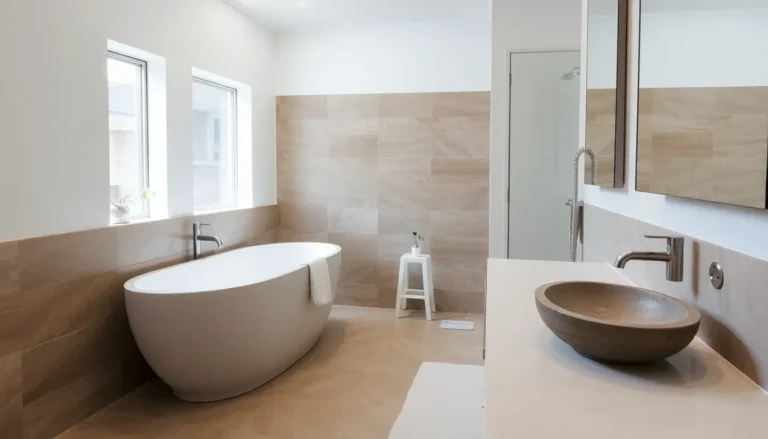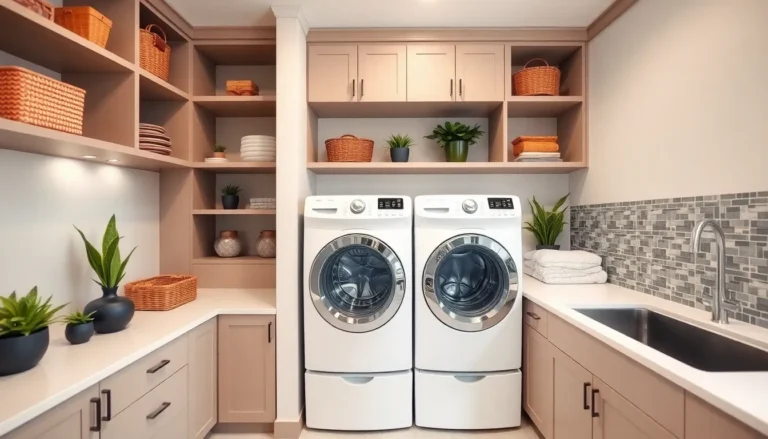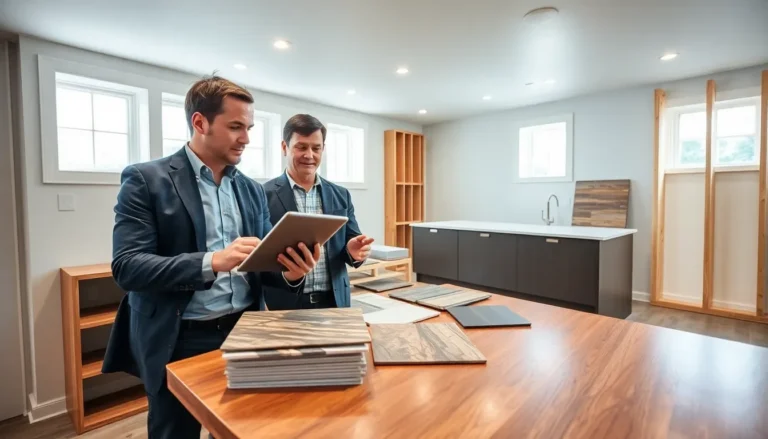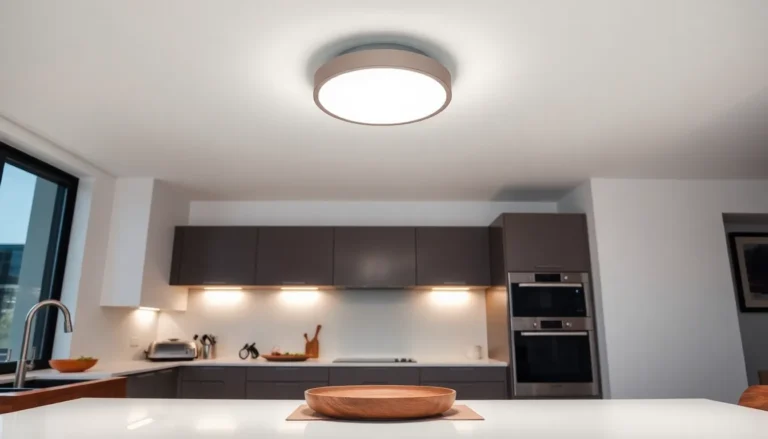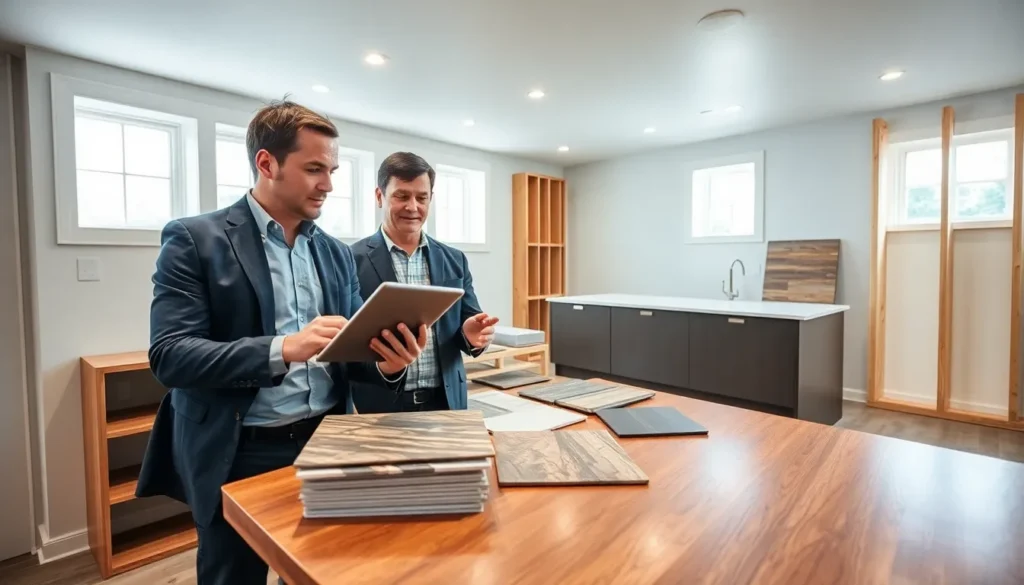Table of Contents
ToggleWhen it comes to capturing extra space in your home, basement renovations can be a game-changer. But before you jump into the world of transformed subterranean spaces, let’s face facts: the cost can vary wildly, much like your neighbor’s choice of lawn gnomes. Whether you’re pondering a cozy man cave or a bright new guest suite, knowing what influences basement renovation costs can save you headaches, and a few bucks. So grab a snack, and let’s break down what you need to consider before embarking on your renovation adventure.
Factors Influencing Basement Renovation Costs

1. Size and Layout of the Basement
The sheer size of the basement plays a key role in the renovation’s overall cost. A larger space naturally requires more materials and labor, which can quickly inflate your expected expenses. Also, the layout impacts costs, open spaces generally have fewer walls and more straightforward designs, while a complex design with multiple rooms may require more intricate work.
2. Type of Renovation
Considering what type of renovation is on your wishlist affects pricing too. Basic cosmetic updates involve painting and flooring, making them less costly than extensive remodels that might include reconfiguring plumbing or adding walls. Think about whether you’re ready for a DIY facelift or a full-blown overhaul.
3. Material Choices and Quality
Not all materials are created equal, and this can drastically change the budget. Would you prefer luxurious granite countertops or cost-effective laminate? Solid wood flooring comes with a heftier price tag compared to vinyl, and these choices can send your budget spiraling in either direction. It’s essential to balance quality with cost to get the best value for your renovation.
4. Labor Costs and Contractor Fees
Hiring professionals typically increases renovation costs but can also save time and ensure quality. Labor costs can vary based on the contractor’s experience and local market rates. Be sure to obtain multiple estimates, as this will help give a clearer picture of what hiring a pro might set you back.
5. Permits and Regulations
Navigating permits and local regulations is another factor that can sneak up on you. Depending on where you live, specific improvements might require permits, adding to your overall costs. Always check zoning laws and building codes to avoid nasty surprises down the line.
Average Cost Breakdown for Basement Renovations
1. Basic Renovations
For those looking to give their basement a little love without very costly, basic renovations can range from $10,000 to $20,000. This typically includes a coat of paint, new flooring, and perhaps some basic lighting fixtures. If you’re simply updating the space for functional use, this could be an excellent starting point.
2. Mid-Range Upgrades
If mid-range upgrades are more your style, expect to spend between $20,000 and $50,000. This price point might cover furnishings, quality flooring, and reasonable custom setups. Things like built-in shelves or a small kitchenette would fit comfortably within this budget, allowing you to enjoy a more inviting atmosphere without going overboard financially.
3. High-End Finishes
For those with a penchant for elegance, high-end finishes could see renovation costs soar anywhere from $50,000 to $100,000 or more. Think custom cabinetry, luxurious flooring, and elaborate lighting setups. These renovations can transform the space into a stunning area that rivals main living spaces, but be prepared to spend considerably more.
Hidden Costs in Basement Renovations
1. Structural Issues
While you may envision a perfect finished basement, structural issues could rear their ugly heads. Cracks in walls or ceilings, uneven floors, or inadequate supports can incur unexpected costs. Depending on the severity, addressing these problems could add thousands onto your renovation bill, so a thorough inspection is vital.
2. Water and Moisture Control
Waterproofing your basement is non-negotiable. Whether it’s sealing walls or installing drains, getting the moisture situation under control might not be cheap. On average, homeowners can spend between $2,000 and $5,000 on necessary waterproofing solutions. A dry basement is essential, and this cost is worth every penny in the long run.
3. Electrical and Plumbing Adjustments
If your renovation involves new bathrooms or kitchens, you’ll likely need to make electrical and plumbing adjustments. This can add significant costs, potentially thousands of dollars, depending on the existing setup and what you need to be revamped. Always budget for these necessities to avoid surprises.
Budgeting for Your Basement Renovation
1. Setting a Realistic Budget
Creating a comprehensive budget is crucial. With a detailed plan in place, homeowners can avoid financial pitfalls. Consider all factors mentioned earlier, size, materials, labor, and hidden costs, and factor in some flexibility for unforeseen expenses.
2. Contingency Funds
Setting aside a contingency fund of about 10% to 20% of your total budget is wise. This way, if issues like structural repairs or unexpected pipe problems arise, you won’t be scrambling financially. A well-prepared budget ensures you can tackle the renovation without impeding on your financial stability.
3. Financing Options
If your dreams outweigh your budget, consider financing options. Many homeowners opt for a home equity line of credit (HELOC) or remodeling loans, which can provide the necessary cash flow to realize the basement you’ve always wanted. This option can spread costs over time, making it easier to manage financially.
Tips for Cost-Effective Basement Renovations
1. DIY vs. Professional Help
With a little elbow grease, many homeowners can tackle specific renovation tasks. If you have skills in painting or simple installations, it might save money to DIY. But, crucial tasks like plumbing and electrical work generally require professional attention. Weigh your skills against potential savings to strike a balance.
2. Maximizing Space Efficiently
When redesigning your basement, focus on maximizing space. Using multipurpose furniture or wall-mounted shelves can optimize the area and minimize costs. This creative approach allows for a functional space without expensive builds and allows more budget for finishing touches.
3. Choosing the Right Time for Renovation
Timing your renovation can make a significant difference in price. Off-peak seasons for contractors often see lower rates and increased availability. Also, scheduling renovations while maintaining good weather conditions can help faster work and minimize delays, keeping costs down.


